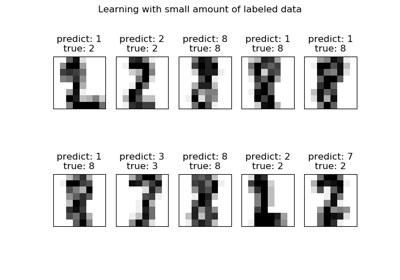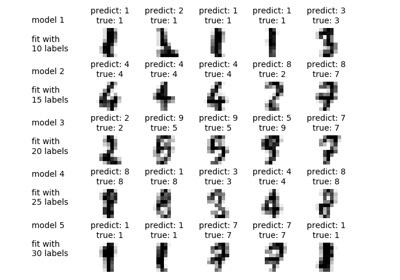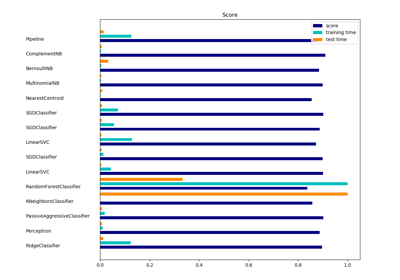sklearn.metrics.confusion_matrix¶
-
sklearn.metrics.confusion_matrix(y_true, y_pred, labels=None, sample_weight=None, normalize=None)[source]¶ Compute confusion matrix to evaluate the accuracy of a classification.
By definition a confusion matrix \(C\) is such that \(C_{i, j}\) is equal to the number of observations known to be in group \(i\) and predicted to be in group \(j\).
Thus in binary classification, the count of true negatives is \(C_{0,0}\), false negatives is \(C_{1,0}\), true positives is \(C_{1,1}\) and false positives is \(C_{0,1}\).
Read more in the User Guide.
- Parameters
- y_truearray-like of shape (n_samples,)
Ground truth (correct) target values.
- y_predarray-like of shape (n_samples,)
Estimated targets as returned by a classifier.
- labelsarray-like of shape (n_classes), default=None
List of labels to index the matrix. This may be used to reorder or select a subset of labels. If
Noneis given, those that appear at least once iny_trueory_predare used in sorted order.- sample_weightarray-like of shape (n_samples,), default=None
Sample weights.
- normalize{‘true’, ‘pred’, ‘all’}, default=None
Normalizes confusion matrix over the true (rows), predicted (columns) conditions or all the population. If None, confusion matrix will not be normalized.
- Returns
- Cndarray of shape (n_classes, n_classes)
Confusion matrix.
References
- 1
Wikipedia entry for the Confusion matrix (Wikipedia and other references may use a different convention for axes)
Examples
>>> from sklearn.metrics import confusion_matrix >>> y_true = [2, 0, 2, 2, 0, 1] >>> y_pred = [0, 0, 2, 2, 0, 2] >>> confusion_matrix(y_true, y_pred) array([[2, 0, 0], [0, 0, 1], [1, 0, 2]])
>>> y_true = ["cat", "ant", "cat", "cat", "ant", "bird"] >>> y_pred = ["ant", "ant", "cat", "cat", "ant", "cat"] >>> confusion_matrix(y_true, y_pred, labels=["ant", "bird", "cat"]) array([[2, 0, 0], [0, 0, 1], [1, 0, 2]])
In the binary case, we can extract true positives, etc as follows:
>>> tn, fp, fn, tp = confusion_matrix([0, 1, 0, 1], [1, 1, 1, 0]).ravel() >>> (tn, fp, fn, tp) (0, 2, 1, 1)




